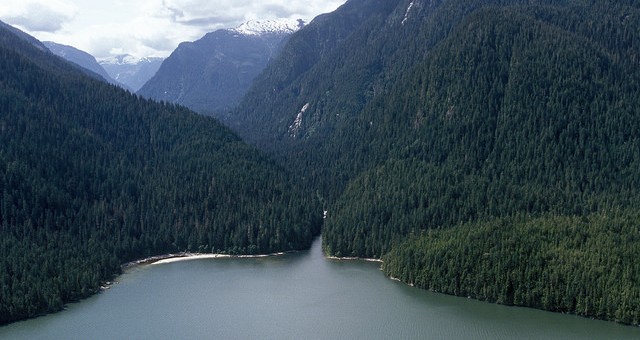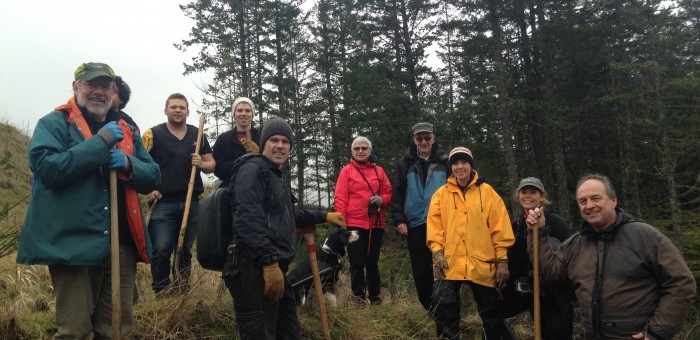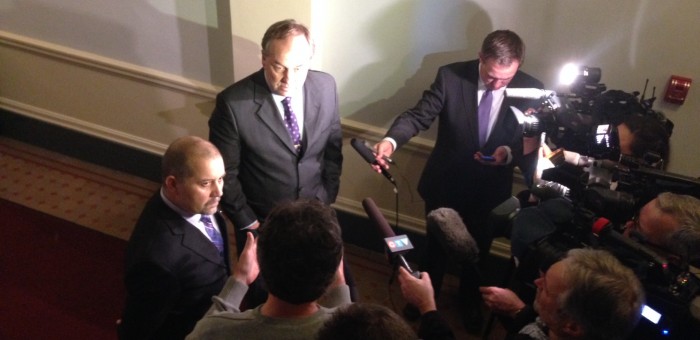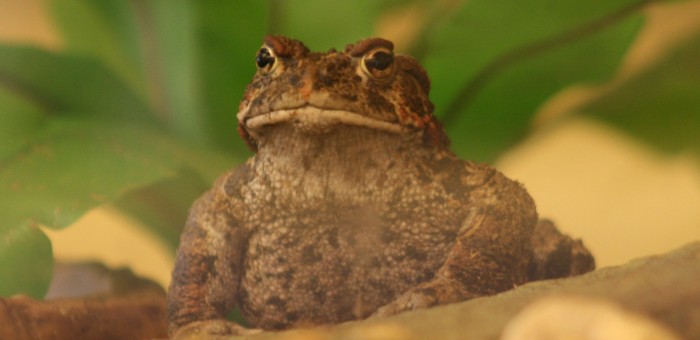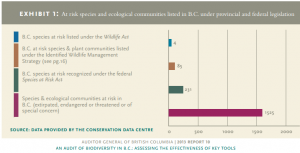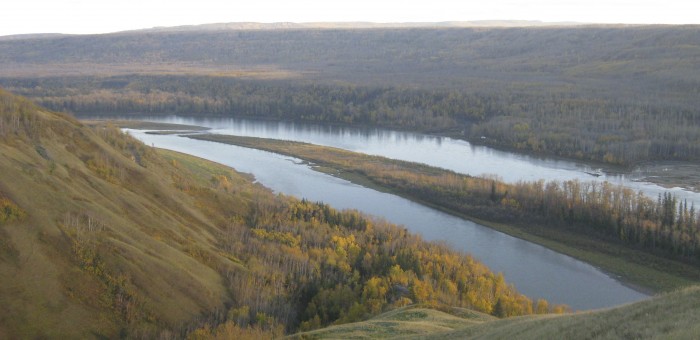Environment
Bill 2 – 2016: Great Bear Rainforest (Forest Management) Act
Today in the Legislature I rose at second reading to speak in support of the historic Bill 2 – 2016: Great Bear Rainforest (Forest Management) Act. This bill is being supported by all parties. It provides the legislative changes required to enable the recent negotiated agreement between 26 First Nations, the province, non-government organizations and forest companies that protects vast areas of our Great Bear Rainforest.
Below are the text and video of my speech. Near the beginning a speech you will see that a class of grade 5 students from Vancouver were introduced by George Heyman, MLA for Vancouver-Fairview. It was a light moment for both sides of the house as we collectively greeted the students.
Text of my Speech
A. Weaver: It gives me great pleasure to rise with my colleagues on both sides of this House to support, as well, Bill 2, the Great Bear Rainforest (Forest Management) Act.
This is truly a remarkable event when we find 26 First Nations, the province of British Columbia, several — in fact, numerous — non-governmental organizations and forest companies coming together to reach an agreement in terms of what can be logged, what will be logged, what should not be logged and how logging should be done in an area on the west coast of our province known as the Great Bear Rainforest.
The bill before us, Bill 2…. Let’s be clear that this bill is really a bill about what can be logged, what can be cut. It leaves a lot, as we’re seeing from other bills, up to regulations that will be put forward through order-in-Council at some point in the future. I don’t want to diminish the importance of this bill, of course, but again, I want it to be very clear that what we are debating is what can be cut in the Great Bear Rainforest, rather than, in some sense, the ways in which we do cut or the overall ecosystem-based approach to forestry that’s being taken.
Let me also acknowledge that, as with any bill or any agreement, there will be those who think that government gave away too much. There will be those who think that government didn’t give away enough. There will be those environmental groups that think this was a sellout. There will be those environmental groups that think this is a great success.
This is true of every agreement that is made. But what’s important to recognize is that we were not at the table. Who was at the table? Well, 26 First Nations, a number of environmental groups and a number of forest companies. To get agreement on this is truly an important event.
G. Heyman: With respect to the member for Oak Bay–Gordon Head, I seek leave to make an introduction.
Leave granted.
Introductions by Members
G. Heyman: Thank you very much, and thank you to the member.
Joining us in the gallery above me today is a grade 5 class. In fact, the class is split in two from Talmud Torah School in Vancouver-Fairview. I met them at the door. They’re accompanied by teachers Lisa Romalis, Becky Chan and Nicole Andersen.
This is almost a school within a school. There are 75 grade 5 students. We had a very brief discussion about the bill that we’re debating right now, and they’re pretty excited about being here for such a momentous occasion. I hope that the House will make them very, very welcome.
Debate Continued
A. Weaver: It gives me great pleasure to sit down and allow the member for Vancouver-Fairview to introduce a class, because it is so incredibly important that we engage our youth in our democracy. So thank you to the member, and thank you to the class for being here, even though I can’t see you up there.
On to the agreement that we’re debating, Bill 2, Great Bear Rainforest Act. I’m sure that each and every young person in that class is going to go home riveted to the screen and watch all debates today and make sure that they study this, because there will be a test on Friday next week on what you have learned about the Great Bear Rainforest. I’m just joking.
Interjections.
A. Weaver: There’s no test. I’m only joking.
Interjection.
A. Weaver: Oh, it’s Good Friday, of course. It’s a holiday.
Coming back to the agreement, as I mentioned, there will be some who don’t think enough was given. There will be some who think too much was given. But I say to those people and to those groups: “You were not present at the table. I was not present at the table.” Those who were present at the table — 26 First Nations, the province, non-government organizations, forest companies — came to an agreement, a monumental agreement, that protects vast areas of our Great Bear Rainforest.
Now, the issue of protection is a complex one. As we know, the forests make up more than half of the Great Bear Rainforest — a total of 3.7 million hectares, or 9.1 million acres. The land use orders in this bill identify 1.36 million acres of managed forest that will support a sustainable harvest. That creates stability for First Nations, workers, communities, investors and customers alike.
One-third of the Great Bear Rainforest is fully protected in parks and conservation areas, and about 9 percent of the total — it’s about 15 percent of the forested area — is available for timber harvesting in the managed forests. The managed forests comprise 550,000 hectares, or about 1.36 million acres, where harvesting of old growth and second growth is guided by ecosystem-based management.
We’ll explore at committee stage what this government’s interpretation of ecosystem-based management is, but I would like to outline the subtle differences between the various land use zones. It is complex, and it is something that I think that not all will appreciate.
So 471 hectares are fully protected in what are known as parks and protected areas. Now, protected areas generally have one or more existing or proposed activities that are not usually allowed in a park — i.e., perhaps a proposed industrial road, pipeline, transmission line or communications site. Allowable activities and management direction are determined by specific provisions and special conditions when the area is established as well as relevant sections of the Park Act and the Park, Conservancy and Recreation Area Regulation, as identified in the order-in-council.
Conservancies are also being used. Now, 1.5 million hectares, or about 3.7 million acres, are in a designation that protects ecological values and recognizes the importance of specific areas for First Nations.
What are conservancies? Well, conservancies are slightly different, again, from the protected areas. They are Crown land set aside for four things: “(a) the protection and maintenance of their biological diversity and natural environments; (b) the preservation and maintenance of social, ceremonial and cultural uses of First Nations; (c) the protection and maintenance of their recreational values; and (d) the development or use of natural resources in a manner consistent with (a), (b) or (c).” As I say, conservancies are a designation that protects ecological values and that recognizes the importance of specific areas to First Nations.
So 764,000 acres are being designated biodiversity, mining and tourism areas. These are areas where the primary use is biodiversity conservation and protection of ecological and cultural values. Commercial forestry and hydroelectric generation linked to the power grid are not allowed.
Then there are the special forest management areas, 675,000 acres of which are preserved. These are areas where hydroelectric generation and mining and tourism development are allowed as long as they maintain ecological integrity. Commercial forestry is not allowed. It is expected that some of these will become biodiversity, mining and tourism areas or conservancies over time. The land plan and the land use zones are quite complex and lead to a rather beautifully coloured map — which I’m not allowed to show, as it would be considered a prop — that we have to consider when we look at the Great Bear Rainforest.
When I quote a couple of leading voices on this agreement, I think it’s important to recognize that there is widespread support. Vicky Husband, as we all know, one of B.C.’s leading environmental voices, said: “It is impressive that environmental negotiators were able to get so much when government wanted to give so little. But she is dismayed the deal has allowed the government to cast itself as green, when it is still allowing ancient forests to be logged and grizzly bears to be shot.” So there’s support but qualified support.
Rick Slaco, who chairs a group representing the logging companies in the region, stated: “What we’re getting for it is a dedicated land base, a defined amount of harvest, a harvest that is conflict-free, a harvest we can plan our business around. It comes with a social licence.” He also noted: “The significant part of this agreement for the forest industry is that we’re still going to cut trees down. We’re going to cut down less of them” — he should have said “fewer of them” — “and cut them down in a different way.”
Interjection.
A. Weaver: I’m glad that the class has now left. I was just correcting the grammar for them there. I should add “sic” in brackets for Hansard there.
“We didn’t do this to go out of business,” he says.
We have qualified support from Vicky Husband, a well-known name. Frankly, to get qualified support from her is quite a sign that this is a deal that has got widespread support in the province — and from the forest industry as well, when so much land is preserved, is also quite a significant coup that we have.
I do caution some temperance on the rhetoric that we’re hearing from the government. I recognize that the government is proud to bring this to us today, as we are all proud in British Columbia to be able to support this. However, statements like: “We’re green world leaders. This is our gift to the planet….” It’s a little tough to take from a government that’s purporting to develop an industry that the rest of the world is either moving away from or already has a glut of supply in.
Let’s not forget, too, that in fact, the deal that saved the Great Bear Rainforest has actually been announced something like 15 times already over the past number of years. While an often-cited announcement, it is important to recognize that it is this government and this Legislature that has the honour of being able to prove it today.
While I do caution the temperance, government doesn’t need to oversell this. This sells itself. There’s no need for rhetoric to say how great government is in doing this. This sells itself. We will praise this agreement on this side of the House as much as anybody. So I suggest that in some sense, credibility is lost a little bit if government touts its own success. Let others tout this success, because this is a success, and we are here to actually support government on this.
But it is not the thing that makes B.C., giving a gift to the entire world, green leaders of the world. It’s an important step, an important conservation step, a historic agreement, that puts the rights of First Nations front and centre and the rights of ecological systems there front and centre. We’ll explore this in more detail at committee stage.
As I mentioned, this bill really, again, is about very specific details focused on determining the allowable annual cut and forest licences, tree farm licences, that will be affected. It’s not light reading for grade five elementary students who may attend it here. The summaries are much easier to grapple with. As the government has suggested, this bill will: “Enable implementation of unique ecosystem-based management rules to the Great Bear Rainforest that move beyond current legislation while ensuring that normal rules under the Forest Act still apply.” This is important, but we need to explore what government is thinking “ecosystem-based management” means.
Government also is suggesting this will “Legally establish a Great Bear Rainforest area and assign an initial allowable cut of 2.5 million cubic metres per year for ten years for the entire area. But after ten years, the allowable annual cut would be determined by the chief forester under section 8 of the Forest Act, as is the case in other management units” — again, something that needs exploration at committee stage as to what government is thinking here in the longer term.
The government says that this agreement will “Establish new timber supply areas and reconfigure existing ones to better reflect the boundaries of the Great Bear Rainforest.” Again, something that we’ll explore further at committee stage with respect to what the boundaries are, and how they are defined, of the Great Bear Rainforest.
The government also says that this bill will “Provide for the designation of new special forest management areas that prohibit commercial timber harvesting areas.” Again, here, we’ll seek information further as to what commercial means in this regard and how the different land use zones come in to play.
Government says that it plans to “Enable regulations to specify where forest practices may differ from those under the Forest and Range Practices Act and regulations.” Again, this needs to be explored more comprehensively in the committee stage.
Finally, this bill, government states, will “Allow the minister to set ‘partitions’ at the licence level, where partitions can be set to ensure a certain portion of a licensee’s annual cut is directed in a particular geographic area or restricted to a particular tree species” — again, a topic that I think needs to be explored further at committee stage.
In conclusion, I, like the rest of my colleagues in this chamber, am delighted to stand and support this historic agreement. I look forward to committee stage, to explore some of the thinking of government as we move towards a discussion of what it has in mind with respect to the regulations that it is empowering in the introduction of this bill.
I leave government with a final note. Let us celebrate your successes well. It is far better than when government touts its own successes too much, because people don’t actually value and appreciate the success when it is done that way. It is better when others call you world class. It is better when others congratulate you. When one congratulates one’s self or one calls one’s self world class, it makes one wonder if you are world class or whether we should be congratulating you.
Video of my speech
Shawnigan Lot 21 Soil Sample Results
Late last week I received the results from the soil samples I collected on Lot 21 during the period that title reverted to the Crown.
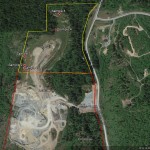 As I discussed earlier, I collected a total of fives samples from five separate locations on Lot 21 (see image above left for precise locations). Since automated drilling instruments were not allowed under FLNRO policy on Crown Land Use Policy, we used shovels to dig the five samples at depths of 28″, 14″, 15″, 22″ and 0″, respectively,
As I discussed earlier, I collected a total of fives samples from five separate locations on Lot 21 (see image above left for precise locations). Since automated drilling instruments were not allowed under FLNRO policy on Crown Land Use Policy, we used shovels to dig the five samples at depths of 28″, 14″, 15″, 22″ and 0″, respectively,
The soil samples were analysed by Maxxam Analytics for Volatile Organic, Total Hydrocarbon and Elemental Metal analyses. The results are now available. While I recognize that my approach of taking a few samples is a bit like looking for a needle in a hay stack, the good news is that both volatile organic and total hydrocarbon content were below detectable levels in all samples.
 As indicated in the Residential/Parkland column of the Soil Quality Guidelines of the Canadian Council of Ministers of the Environment, the only sample that revealed above-recommended values was Sample #3. In this case both Zinc and Copper were over the guidelines.
As indicated in the Residential/Parkland column of the Soil Quality Guidelines of the Canadian Council of Ministers of the Environment, the only sample that revealed above-recommended values was Sample #3. In this case both Zinc and Copper were over the guidelines.
While my tests are by no means exhaustive and do not address the fundamental question as to what, if anything, is buried deep under the surface in Lot 21, they add to the body of knowledge concerning the area.
Calling for more ambition in Federal approach to climate
Media Statement: March 03, 2016
Andrew Weaver calls for more ambition in Federal approach to climate
For Immediate Release
Victoria, B.C. – Recognizing the positive step forward that has been taken in bringing together the Premiers of Canada to work on a climate plan, Andrew Weaver, Leader of the B.C. Green Party and MLA for Oak Bay-Gordon Head, says the agreement today is more about good political optics, than about substantive climate policy.
“We don’t meet our targets without a price on carbon. Pure and simple,” says Weaver. “While I recognize that federal leadership has been lacking for the last decade, and that coming together to try and unite our country around climate action is a significant improvement, in reality this agreement postpones any nation-wide action for at least six months.”
“At the end of the day we don’t need a plan to create a plan,” says Weaver. “Our Prime Minister promised to work out a national climate strategy within 90 days of Paris and that didn’t happen today. We need action and firm commitments. Investments in green infrastructure is good news, but carbon pricing is what is ultimately needed.”
“Climate action in British Columbia has also been stalled under Premier Clark,” said Andrew Weaver. “No substantive new climate action has been taken, and GHG emissions are once again on the rise. Leader’s lead. They don’t wait for others to catch up.”
-30-
Media Contact
Mat Wright – Press Secretary Andrew Weaver MLA
1 250 216 3382
mat.wright@leg.bc.ca
Toad Road yet no Abode
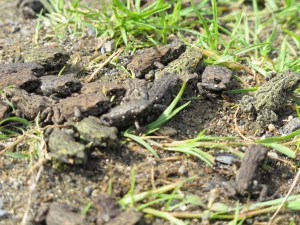 Given the myriad challenges facing wildlife in our province, one of the best things we can do to protect biodiversity in B.C. is to leave key habitat areas intact. As the global climate warms and precipitation patterns shift, having a complete ecosystem within which animals and plants can try to adapt will be essential, and frankly the least we can do given the dire situation many species are in.
Given the myriad challenges facing wildlife in our province, one of the best things we can do to protect biodiversity in B.C. is to leave key habitat areas intact. As the global climate warms and precipitation patterns shift, having a complete ecosystem within which animals and plants can try to adapt will be essential, and frankly the least we can do given the dire situation many species are in.
This is not news to the government, of course. For species ranging from mountain caribou to spotted owls and goshawks, the Ministry of Environment is quick to reference habitat loss as a contributing, if not the main, factor in population declines:
“human activities associated with resource extraction are the ultimate threats to caribou in British Columbia. Human development fragments and alters caribou habitat…“
“[The spotted owl] is at risk in this province because much of its habitat has been adversely affected by logging or lost due to land development.“
“The laingi subspecies of Northern Goshawk requires large areas of old-growth and mature forest. Large-scale timber harvesting removes much suitable nesting and foraging habitat… Because of this, the laingi subspecies is believed to be in jeopardy, and is on the British Columbia Red List.“
Likewise, the government cites habitat destruction as one of the greatest impacts on western toad populations in B.C.
“Development in and around wetlands can destroy or isolate populations.“
To a lesser extent, though still of importance, migrating toads are often killed by traffic as they try to cross roads.
Western toads are considered a species of conservation concern by the government of British Columbia and have been designated a status of special concern by the Committee on the Status of Endangered Wildlife in Canada (COSEWIC). In theory, they are protected under the B.C.’s Wildlife Act.
While BC has the most biodiversity in Canada, it is also one of two provinces (the other being Alberta) that has no provincial endangered species legislation. Sadly, BC is the home of more than 1,500 species currently at risk of extirpation or extinction.
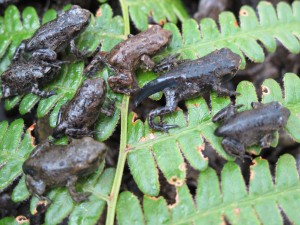 Summit Lake, just outside the village of Nakusp in the Kootenay region, is a key breeding area for western toads. Every year, usually around the end of August, young toadlets migrate from the shoreline of Summit Lake, across Highway 6, to upland habitat where they will live for four or five years before they return to the lake to breed. The mass migration sees upwards of a million little toads attempting the crossing, with tens of thousands getting run-over in the process.
Summit Lake, just outside the village of Nakusp in the Kootenay region, is a key breeding area for western toads. Every year, usually around the end of August, young toadlets migrate from the shoreline of Summit Lake, across Highway 6, to upland habitat where they will live for four or five years before they return to the lake to breed. The mass migration sees upwards of a million little toads attempting the crossing, with tens of thousands getting run-over in the process.
Hoping to help, nearby communities hold an annual Toadfest where people carrying the migrating western toads from the curb to the forest in buckets. The provincial government has also tried to address the problem by building directional fences leading to toad tunnels that allow the toads to safely cross under the highway. This amounts to an innovative solution and $200,000 investment in the protection of an increasingly threatened species. In the Ministry of Transportation and Infrastructure’s employee newsletter about their work they described the mass movement of western toads from Summit Lake to the forest as “among the great wildlife migrations in the world.”
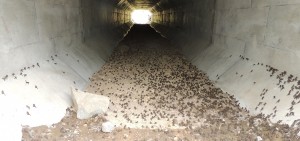 Unfortunately, the story doesn’t end there. After being safely escorted across the highway, via toad tunnel or bucket, the toads will now find themselves in a forest slotted for logging. Road building began last week and there are plans in the works to clear cut the 30 hectares where the toads hibernate.
Unfortunately, the story doesn’t end there. After being safely escorted across the highway, via toad tunnel or bucket, the toads will now find themselves in a forest slotted for logging. Road building began last week and there are plans in the works to clear cut the 30 hectares where the toads hibernate.
To their credit, the Nakusp and Area Community Forest (NACFOR) logging company has drafted a toad management plan and identified small habitat features that they’ll try to leave intact. I commend NACFOR for exploring ways in which they can continue to harvest the timber while also being mindful of this species of special concern, but it is really the government that should be in the leadership role here.
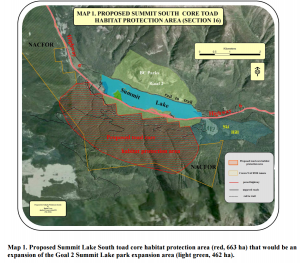 Protection of core terrestrial habitat – defined as “the spatial delineation of 95% of the population that encompasses terrestrial foraging, breeding, and overwintering habitats rather than buffers” – is seriously recommended in the scientific literature for amphibians (Semlitsch and Bodie 2003, Browne and Paszkowski 2010, Crawford and Semlitsch 2007). If the existing provincial park at Summit Lake were expanded to include the forest within roughly two kilometers of the lake the protection of core terrestrial habitat would likely be achieved, wildlife biologist Wayne McCrory said in his analysis of the situation.
Protection of core terrestrial habitat – defined as “the spatial delineation of 95% of the population that encompasses terrestrial foraging, breeding, and overwintering habitats rather than buffers” – is seriously recommended in the scientific literature for amphibians (Semlitsch and Bodie 2003, Browne and Paszkowski 2010, Crawford and Semlitsch 2007). If the existing provincial park at Summit Lake were expanded to include the forest within roughly two kilometers of the lake the protection of core terrestrial habitat would likely be achieved, wildlife biologist Wayne McCrory said in his analysis of the situation.
The province has been criticized for failing to set aside adequate habitat to protect caribou, spotted owls and goshawks and this toad situation illustrates just how reluctant the B.C. government is to remove forest from the logging land base. The key western toad forest habitat around Summit Lake is a relatively small, very specific area that could be included into the existing provincial park. This would represent a minor exemption from their 9,816 hectare total operating base.
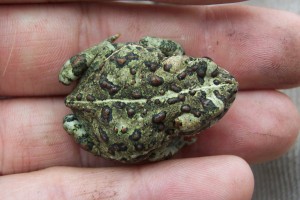 The creation of the toad tunnel represented an admirable step forward for the government’s approach to wildlife issues. Granting approval to log their core terrestrial habitat represents more of a smoking bulldozer ride back – squashing all their advancements in the process.
The creation of the toad tunnel represented an admirable step forward for the government’s approach to wildlife issues. Granting approval to log their core terrestrial habitat represents more of a smoking bulldozer ride back – squashing all their advancements in the process.
“Be an advocate for amphibians – protect toads and their habitat in your neighbourhood,” reads the government’s BC Frog Watch website.
Good advice, that I respectfully urge the BC government to follow by protecting western toad habitat around Summit Lake before it’s too late.
Sympathy for Protesters in the Wake of Site C Ruling
Media Statement: February 29, 2016
Andrew Weaver Expresses Sympathy for Protesters in the Wake of Site C Ruling
For Immediate Release
Victoria, B.C. – Andrew Weaver, Leader of the B.C. Green Party and MLA for Oak Bay-Gordon Head, expresses sympathy for the protesters’ position but recognizes the court’s ruling.
“We must respect the rulings of the courts,” says Weaver. “However, I think the reasons behind why the protesters were there in the first place were, and remain, valid. I greatly sympathize with the lengths they have gone in an attempt to be heard during this process.”
“Site C has been a project that has been aggressively pushed through by this government, primarily to fuel an LNG industry that doesn’t exist. They committed to a huge project and are now in the process of trying to save face. It’s expensive gamble borne on the backs of British Columbians.”
“There have been exemptions on oversight every step of the way,” says Weaver. “The government has done everything it can to push aside dissent without reasonable justification. This injunction is, to my mind, another example of bullying out disagreement, rather than listening to the concerns of British Columbians.”
“Despite the court’s ruling, I still believe Site C is risky and foolish and I will continue to voice my opposition to this project. British Columbians are going to be paying for Site C for decades and in the absence of a vastly expanded LNG industry, we simply don’t need it.”
-30-
Media Contact
Mat Wright – Press Secretary Andrew Weaver MLA
1 250 216 3382
mat.wright@leg.bc.ca

